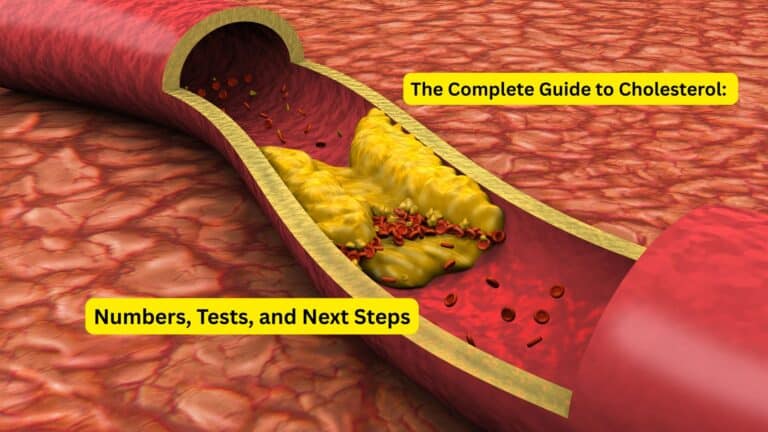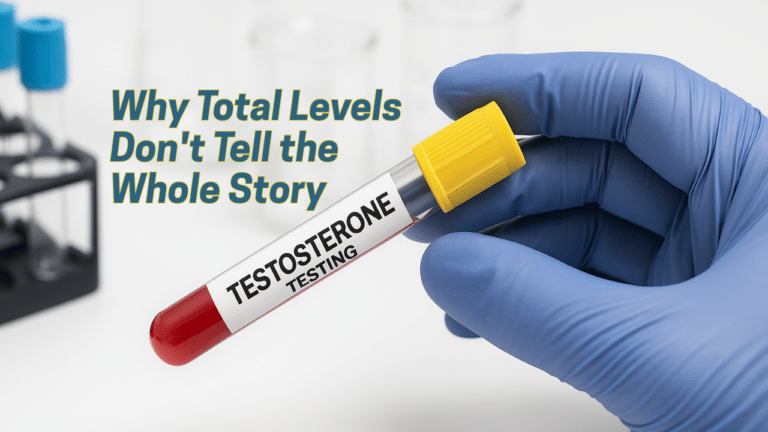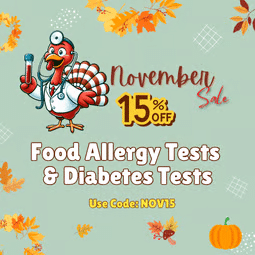Recognizing the warning signs of heart problems can mean the difference between life and death, yet many people remain unaware of the diverse ways heart trouble can manifest. While some heart attacks announce themselves with dramatic chest pain, others begin subtly with symptoms that are easily dismissed or attributed to other causes. Understanding both the classic and atypical signs of heart distress empowers individuals to seek timely medical attention when every minute counts.
Heart health warning signs vary significantly between individuals, with factors such as age, gender, and overall health status influencing how symptoms present. Women, in particular, often experience different symptoms than the classic presentations typically described in medical literature, leading to delayed recognition and treatment. By learning to identify these various warning signs and understanding when immediate action is necessary, individuals can protect themselves and their loved ones from potentially devastating cardiac events.
The importance of symptom awareness extends beyond personal knowledge – it creates a foundation for proactive heart health management that includes regular monitoring and preventive care. Walk-In Lab’s accessible cardiovascular testing provides crucial tools for identifying risk factors before they progress to emergency situations, enabling individuals to take control of their heart health through early detection and intervention.
Classic Warning Signs of a Heart Attack
The traditional symptoms of a heart attack, while not universal, remain the most commonly recognized indicators of acute cardiac distress. These classic signs typically develop when blood flow to part of the heart muscle becomes blocked, usually by a clot in a coronary artery, causing tissue damage that triggers distinct physical sensations.
Chest pressure, squeezing, or pain represents the hallmark symptom that most people associate with heart attacks. This discomfort is often described as feeling like an elephant sitting on the chest, a tight band around the torso, or intense pressure that comes and goes. The pain may be constant or intermittent, and its intensity can range from mild discomfort to severe, crushing pain that makes breathing difficult.
Pain radiating from the chest to other areas of the upper body serves as another critical warning sign that should never be ignored. This radiating discomfort commonly affects the left arm but can extend to both arms, the neck, jaw, back, or upper abdomen. The pain may feel like it’s traveling along nerve pathways, creating sensations that some people mistake for muscle strain or other non-cardiac conditions.
Additional classic symptoms include shortness of breath that may occur with or without chest discomfort, nausea or vomiting, cold sweats that seem to appear suddenly without obvious cause, and lightheadedness or sudden dizziness. These symptoms often occur together, creating a constellation of signs that indicate serious cardiac distress requiring immediate medical attention.
Subtle Symptoms: How They Differ in Women and Younger Adults
Heart attack symptoms can manifest in ways that deviate significantly from the classic presentations, particularly in women and younger adults who may experience more subtle or atypical signs. These differences have important implications for recognition and treatment, as non-classic symptoms are more likely to be dismissed or misinterpreted by both patients and healthcare providers.
Women frequently present with symptoms that can easily be attributed to other conditions, leading to dangerous delays in seeking treatment. Unusual fatigue that appears suddenly or worsens dramatically, anxiety or feelings of impending doom, and indigestion-like discomfort represent common presentations in women that may not immediately suggest heart problems. Back pain, particularly between the shoulder blades, and jaw pain without chest discomfort can also signal cardiac distress in women.
Approximately 30% of women present with atypical symptoms rather than the classic chest pain typically associated with heart attacks. This statistic highlights the critical importance of awareness about gender differences in symptom presentation and the need for women to trust their instincts when something feels seriously wrong, even if symptoms don’t match traditional expectations.
Younger adults may experience slower, milder symptoms that develop gradually and are often dismissed as stress, overwork, or minor health issues. These individuals might notice decreased exercise tolerance, unusual breathlessness during routine activities, or persistent fatigue that doesn’t improve with rest. The tendency to attribute these symptoms to lifestyle factors or assume that youth provides protection against heart problems can lead to dangerous delays in seeking medical care.
Can Heart Attacks Start Gradually?
Contrary to popular belief, not all heart attacks begin with sudden, severe symptoms that immediately signal a medical emergency. Some heart attacks develop gradually, beginning with mild discomfort that may come and go over hours or even days before escalating to more severe symptoms. This gradual onset can make recognition challenging and may lead individuals to delay seeking medical attention.
The gradual presentation often begins with intermittent chest discomfort that may be dismissed as heartburn, muscle strain, or stress-related tension. These early warning signs might include brief episodes of chest tightness during physical exertion that resolve with rest, unexplained fatigue that progressively worsens, or vague discomfort in the chest, arms, or jaw that seems to have no clear cause.
Understanding that heart attacks can develop slowly emphasizes the importance of not ignoring persistent or recurring symptoms, even when they seem mild. Any chest discomfort that is new, different from previous experiences, or associated with other concerning symptoms deserves medical evaluation. The “wait and see” approach can be dangerous when dealing with potential cardiac events, as early intervention significantly improves outcomes.
Healthcare providers increasingly recognize the importance of educating patients about these gradual presentations, as public awareness campaigns have historically focused on dramatic, sudden-onset symptoms. Individuals experiencing subtle, progressive symptoms should trust their instincts and seek medical evaluation, as early detection and treatment can prevent full-blown heart attacks and minimize heart muscle damage.
Other Critical Emergencies to Know
While heart attacks represent one form of cardiac emergency, other life-threatening conditions require equally rapid recognition and response. Understanding the differences between these emergencies and knowing appropriate responses can save lives and prevent serious complications.
Cardiac arrest represents a distinct emergency characterized by sudden collapse and loss of pulse, requiring immediate CPR and defibrillation for survival. Unlike a heart attack where the person typically remains conscious and responsive, cardiac arrest victims lose consciousness immediately and cannot be awakened. This condition requires immediate action from bystanders, as brain damage begins within minutes of cardiac arrest, and survival decreases rapidly without intervention.
Stroke symptoms require recognition through the FAST acronym: Face drooping (one side of the face droops or feels numb), Arm weakness (one arm drifts downward when both arms are raised), Speech difficulty (slurred speech or strange words), and Time to call 911. Strokes can cause permanent disability or death, but treatment within the first few hours can significantly limit brain damage and improve recovery prospects.
The key difference between these emergencies lies in their mechanisms and required responses. Heart attacks involve blocked blood flow to heart muscle and typically allow time for emergency transport to medical facilities. Cardiac arrest requires immediate CPR and defibrillation, ideally within minutes. Strokes involve interrupted blood flow to brain tissue and require specialized hospital treatment as quickly as possible. Understanding these distinctions helps ensure appropriate emergency responses that can dramatically improve outcomes.
Why Acting Quickly Matters
The timing of medical intervention during cardiac emergencies directly correlates with survival rates and long-term outcomes, making rapid response a critical factor in preventing death and minimizing heart damage. Understanding why speed matters can motivate individuals to seek help immediately rather than waiting to see if symptoms improve or worsen.
Treatment within the first hour of heart attack onset, often called the “golden hour,” can significantly improve survival rates and limit heart muscle damage. During this critical window, medical interventions such as clot-dissolving medications or emergency procedures to open blocked arteries can restore blood flow before irreversible damage occurs. Each minute of delay increases the amount of heart muscle that dies, potentially leading to heart failure, arrhythmias, or death.
Emergency response through calling 911 provides significant advantages over self-transport to medical facilities. Emergency medical personnel can begin life-saving treatments immediately, communicate with hospital staff to prepare for the patient’s arrival, and provide continuous monitoring during transport. Paramedics carry medications and equipment that can stabilize patients and treat dangerous complications that might develop en route to the hospital.
Public education about cardiac emergencies has improved outcomes by reducing the time between symptom onset and medical treatment. However, many people still delay seeking help due to uncertainty about symptoms, fear of false alarms, or concerns about cost. Healthcare providers emphasize that it’s better to seek emergency care for symptoms that turn out to be non-cardiac than to delay treatment for an actual heart attack. Emergency departments are equipped to quickly evaluate and rule out cardiac emergencies, providing peace of mind when symptoms are benign.
Prevention and Proactive Testing
While recognizing warning signs is crucial for emergency response, preventing heart problems through proactive monitoring and lifestyle management represents the most effective approach to maintaining cardiovascular health. Regular testing and preventive care can identify risk factors before they progress to emergency situations, enabling early intervention and lifestyle modifications that protect heart health.
Regular monitoring of cholesterol levels, blood pressure, and glucose provides essential information about cardiovascular risk and helps guide preventive strategies. These key indicators can reveal developing problems years before symptoms appear, allowing time for interventions that can prevent heart attacks and other cardiac events. Walk-In Lab’s comprehensive cardiovascular testing panels provide accessible, confidential screening that removes common barriers to regular monitoring, enabling individuals to track their heart health proactively.
Lifestyle modifications remain among the most powerful tools for preventing heart disease and reducing the risk of cardiac emergencies. A heart-healthy diet rich in fruits, vegetables, whole grains, and lean proteins while limiting processed foods, excess sodium, and added sugars can significantly reduce cardiovascular risk. Regular physical activity, smoking cessation, stress management, and maintaining a healthy weight all contribute to better heart health and lower risk of cardiac events.
The combination of regular testing and healthy lifestyle choices creates a comprehensive approach to heart disease prevention that can dramatically reduce the likelihood of experiencing cardiac emergencies. By identifying and addressing risk factors early, individuals can often prevent the development of conditions that lead to heart attacks, strokes, and other serious cardiac events, making prevention both the safest and most cost-effective approach to heart health.
Frequently Asked Questions
What are the most common heart attack symptoms?
The most common heart attack symptoms include chest discomfort or pain that may feel like pressure, squeezing, or heaviness, along with shortness of breath, nausea, cold sweats, and lightheadedness. Pain may also radiate to the arms, neck, jaw, or back. However, symptoms can vary significantly between individuals, and some people may experience only subtle signs.
Do men and women experience different heart attack symptoms?
Women often experience different and more subtle heart attack symptoms compared to men. While men typically present with classic chest pain, women are more likely to experience unusual fatigue, nausea, back or shoulder pain, anxiety, and jaw discomfort. Women may also have less obvious chest pain or no chest pain at all, which can lead to delayed recognition and treatment.
What should I do if I think I’m having a heart attack?
Call 911 immediately if you suspect you’re having a heart attack. Do not drive yourself to the hospital or wait to see if symptoms improve. Emergency medical personnel can begin treatment immediately and provide continuous monitoring during transport. Time is critical in heart attack treatment, and every minute of delay can increase heart damage.
Can heart attacks happen at a young age?
Heart attacks are increasingly occurring in younger adults, including those under age 40. Risk factors such as diabetes, high blood pressure, high cholesterol, obesity, smoking, and family history can contribute to heart attacks at younger ages. Young adults should be aware of warning signs and not assume their age protects them from cardiac events.
What’s the difference between a heart attack and cardiac arrest?
A heart attack occurs when blood flow to part of the heart muscle is blocked, typically by a clot in a coronary artery. The person usually remains conscious and responsive. Cardiac arrest is an electrical malfunction that causes the heart to stop beating effectively, leading to immediate loss of consciousness and pulse. Cardiac arrest requires immediate CPR and defibrillation, while heart attacks require emergency medical treatment to restore blood flow.
How can I tell if chest pain is serious?
Chest pain that is new, severe, or associated with other symptoms like shortness of breath, nausea, sweating, or pain radiating to other areas should be evaluated immediately. Any chest pain that feels different from previous experiences, occurs during physical activity, or doesn’t improve with rest warrants medical attention. When in doubt, it’s always better to seek emergency care rather than wait and see.
Are there warning signs before a heart attack occurs?
Many people experience warning signs hours, days, or even weeks before a heart attack. These may include unusual fatigue, chest discomfort that comes and goes, shortness of breath, or decreased exercise tolerance. However, not everyone has warning signs, and some heart attacks occur without any advance symptoms. Regular cardiovascular screening can help identify risk factors before they lead to cardiac events.
Conclusion
Understanding and recognizing heart health warning signs represents one of the most important skills for protecting yourself and your loved ones from potentially fatal cardiac events. While classic symptoms like chest pain remain important indicators, the reality is that heart attacks and other cardiac emergencies can present in diverse ways that vary significantly between individuals. Women, younger adults, and those with certain health conditions may experience subtle symptoms that are easily overlooked or misattributed to other causes.
The key to surviving cardiac emergencies lies in a combination of awareness, quick action, and proactive prevention. Learning to recognize both obvious and subtle warning signs enables timely response when emergencies occur, while regular cardiovascular testing and healthy lifestyle choices help prevent these situations from developing in the first place. Every minute counts during cardiac emergencies, making immediate medical attention crucial for optimal outcomes.
Walk-In Lab’s accessible heart health testing provides valuable tools for monitoring cardiovascular risk factors and detecting problems before they become emergencies. By combining symptom awareness with proactive screening and preventive care, individuals can take comprehensive control of their heart health and reduce their risk of experiencing cardiac events.
Don’t wait for warning signs to appear. Take charge of your cardiovascular health today by ordering a comprehensive Heart Health Panel from Walk-In Lab. Early detection and monitoring of risk factors can help prevent cardiac emergencies and protect your heart for years to come. Your heart health is too important to leave to chance – make the commitment to proactive care now.
Medical Disclaimer: This article is for informational purposes only and should not replace professional medical advice. If you suspect you are having a heart attack or cardiac emergency, call 911 immediately. Always consult with qualified healthcare providers regarding your cardiovascular health and any concerning symptoms.






